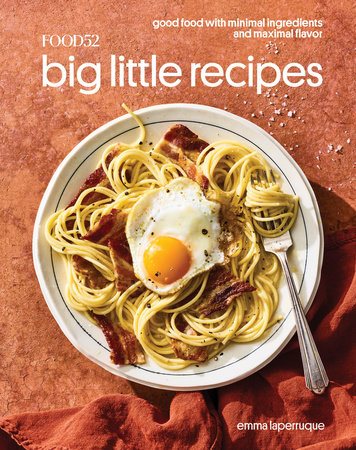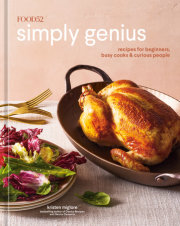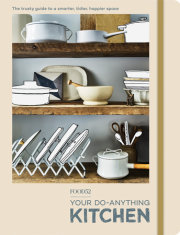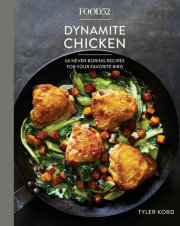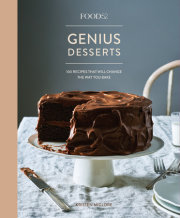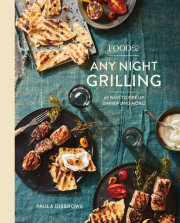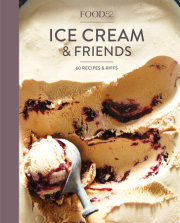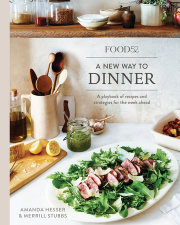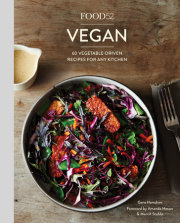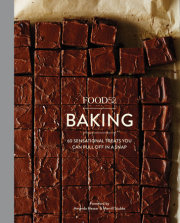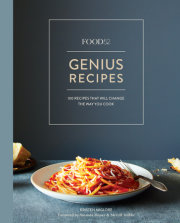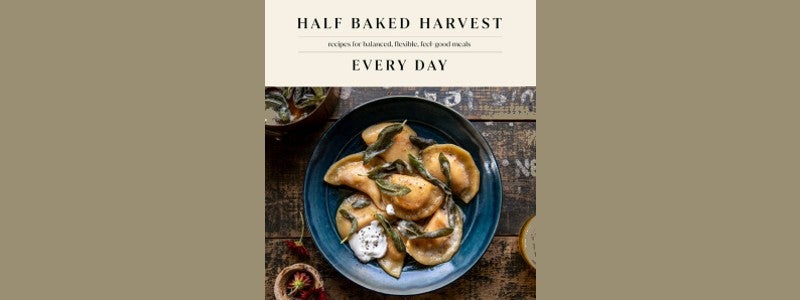IntroductionA dish doesn’t need to have a lot of ingredients to have a lot of flavor. Or, such was my hunch when I started Big Little Recipes as a weekly column on Food52 in 2018—that something like three-ingredient oatmeal cookies or two-ingredient pasta sauce or one-ingredient chicken stock isn’t delicious in spite of its minimalism but, rather, because of it.
If you don’t believe me, just ask a peanut butter and jelly sandwich. According to the internet, you can supposedly upgrade this with bananas, flax seeds, marshmallow fluff, bacon, hot sauce, and, honestly, we could be here all day. But if you’ve ever had a PB&J, you know none of this is necessary. As one of my favorite cookbook authors Marcella Hazan used to tell her students, “What you leave out is just as important as what you put in.”
And the recipes in this book leave out plenty. Besides a few pantry staples like salt and pepper, I’ll never ask you to buy more than five things for a dish. This is a matter of convenience, of course, but it’s also a celebration (a shindig! a rager!) of ingredients. With smart techniques—and a few wily tricks for good measure—ingredients can accomplish a lot more than we give them credit for.
Why throw out the water your beans were cooked in when it actually tastes really good? Why overcrowd a salad with seven fruits when you could spotlight just one? Why include flour in brownies in the first place? You’ll find these answers and then some as you cook and bake through this collection. And along the way, I hope you start to ask your own questions whenever you grocery shop or start dinner. Minimalist cooking is all about healthy skepticism. Do I really need four different herbs as a garnish? Probably not. If I’m out of vegetable stock, will water do the job just as well? You bet.
Because these recipes are so pared-down, each ingredient stands out, so make it count. If you’re able, take advantage of a local farmers’ market, butcher shop, bread baker, cheese maker, grain miller, what-have-you. From a larger perspective, communities are happier with small businesses like these around. And from a selfish one, peak-summer melon just tastes better, like steak from a cow that lived a sunny, grassy life.
If you’ve followed along from the start (oh hi, hello, I love you), you’ll probably recognize some favorites from the column that we couldn’t not include. Like a Caesar dressing that doubles as a marinade, breaded chicken cutlets with no bread crumbs in sight, pasta with a two-ingredient green sauce, and buttery scones that are somehow butterless.
That said, the majority of these recipes are brand-new. The chapters aren’t broken down by meal categories—because who am I to say if bacon and eggs spaghetti is breakfast or dinner? Instead, I focused on the dishes I crave most often: Fresh as heck salads. Brothy-slurpy situations. Pastas, grains, and friends. Brawny meats and briny fishes. Vegetables that don’t want you to call them “sides.” (Don’t do it.) And sweet somethings for whenever you dang well please.
You’ll also find lots of good-to-know tips, mini-recipe spreads, and choose-your-own-adventure charts. Think: a riled-up case for simpler stock, a romantic ode to canned tuna, a very good reason to always have bananas in your freezer, and more where that came from.
Obviously, I hope this book leads you toward so many good meals. But even more than that, I hope it leads you toward a feeling (yes, I know, a feeling) that I first remember from some summer in the mid-’90s: I’m standing in a kitchen, shorter than the countertops, ocean-soaked, bare feet. The windows are open, and my mom is next to me, smearing mayonnaise on toast, piling it with salty, juicy, Jersey tomatoes. And then she leans down and feeds me a bite.
Copyright © 2021 by Emma Laperruque; Foreword by Amanda Hesser and Merrill Stubbs. All rights reserved. No part of this excerpt may be reproduced or reprinted without permission in writing from the publisher.




